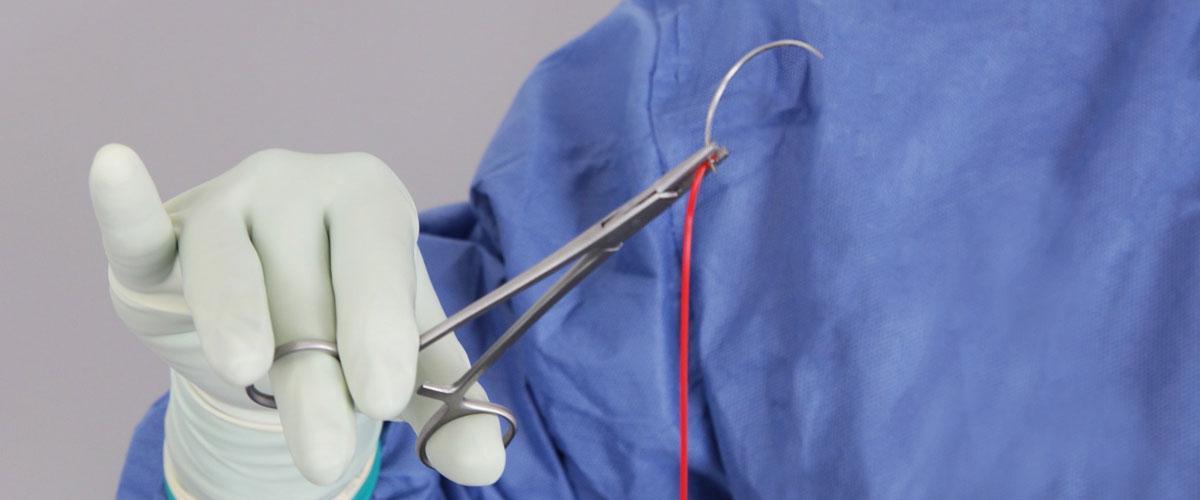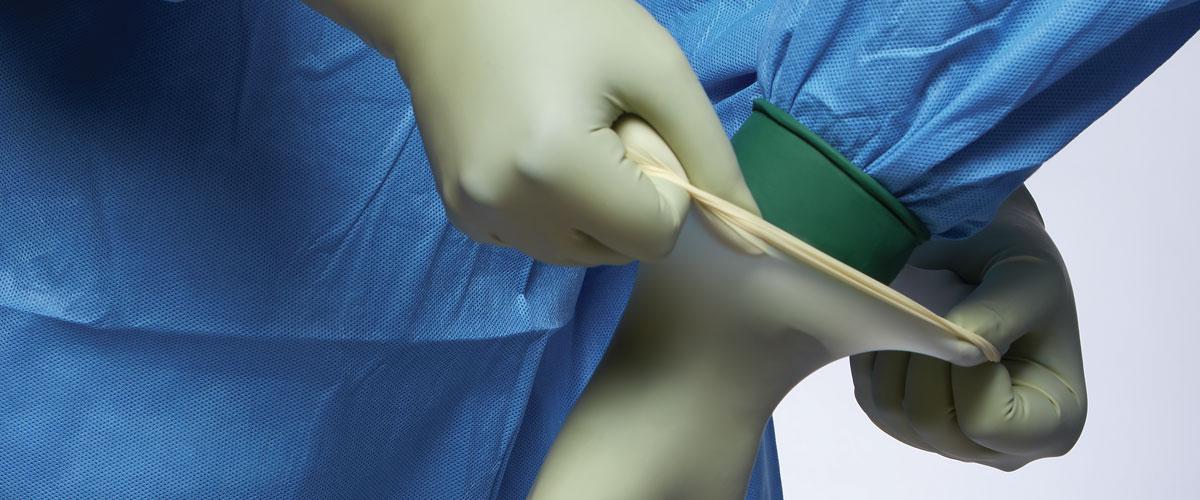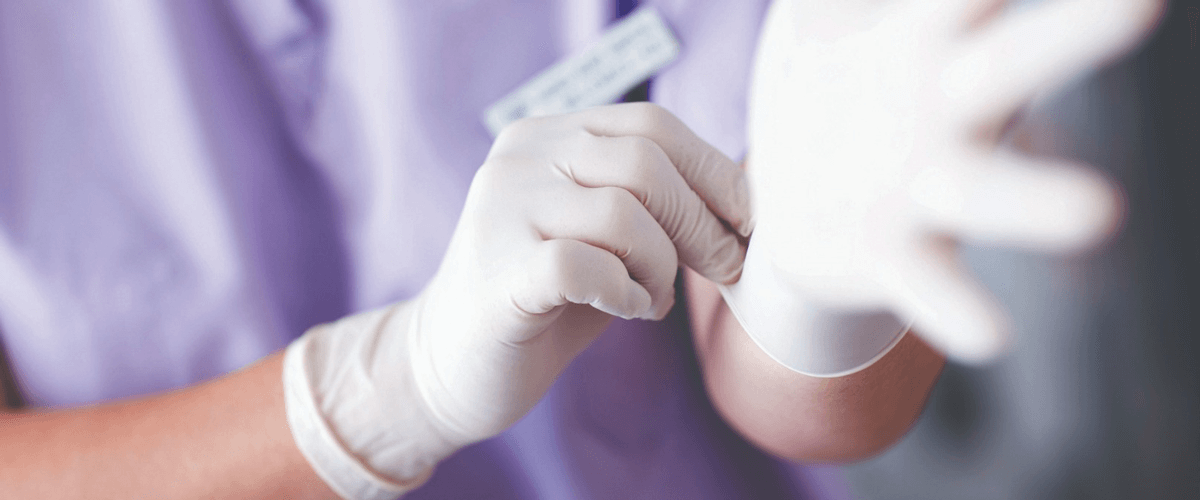Can you remember those scenes in old movies when a healthcare professional would put on a pair of surgical gloves and you could see the powder released into the air with the loud snap of the glove as it returned to their arm? There is something undeniably alluring about powdered gloves, and the nostalgia they bring about is unique.
I’m not going to lie. I like the way they feel. And it is true that powder itself is a great donning agent. Just imagine each particle acting as a little ball bearing between the glove and the user’s hand. No wonder they are so easy to put on. So why are powdered gloves banned in so many healthcare systems or, at the very least, not recommended?
10 risks of powered gloves use
Glove manufacturers recommend using non-powered gloves for the same reason so many countries have banned powdered gloves altogether—safety first. You may not yet realise it, but powdered gloves actually pose many risks. Here are 10 common consequences:
- Powder can lead to the development of adhesions and granulomas.1
- Powder increases the risk of infections in surgical wounds. 2
- Powdered gloves can increase the development of latex allergens and cause Type I hypersensitivity reactions. 3
- Powder contaminates the hospital environment and increases exposure to latex allergens through respiration. 4
- Powder can increase the risk of cross-contamination through microorganisms. 5
- Powder increases operating theatre turnover time and cost. 6
- Powder interacts with alcohol-based hand hygiene solutions. 7
- Powder can interfere with laboratory tests, leading to false results. 8
- Powder has an abrasive effect on the skin. 9
- Countries including Germany, the UK, the US, and Japan have banned powdered surgical gloves altogether.10
Why substitute powered gloves for gloves with polymer coating?
By now, it should be clear why you should avoid powdered surgical gloves. But you may still be wondering: ‘What’s the alternative then?’ Fortunately, for patients and healthcare staff and facilities alike, polymer coating technology has erased the need for powder. And to answer the other question that remains—‘What exactly is polymer coating?’—by polymer coating, we mean an additional layer inside the glove, which acts as a barrier between the glove material (latex, neoprene, or polyisoprene) and users’ hands. It creates a slick surface on an otherwise tacky material. This is what allows for effortless donning (putting on) and doffing (removal).
Since the medical industry has to innovate in order to meet the ever-changing needs of its customers, what’s better than a solution that presents a win/win situation for everyone (except for powder manufacturers perhaps)? Polymer coatings in gloves are a prime example of this. So while your earliest (or only) memory of surgical gloves may very well include the familiar cloud of powder in the air, now you know there are better, safer, and more versatile options available.
Triple layer technology in polymer coatings gloves
However, not all polymer coatings are created equal. For example, as a standout solution, Medline’s EZ Glide polymer coating uses triple layer technology to ensure easy donning with damp or dry hands. In other words, users won’t have any trouble putting on our gloves with damp or dry hands. This is especially important because staff always put on gloves immediately after scrubbing, which often leaves their hands damp. So whether you’re a nurse, doctor, or surgeon, our gloves can be put on easily without a struggle.
For more information on Medline’s non-powdered surgical gloves options, visit our catalogue.


Joe Moriarty
Associate Product Manager Exam & Surgical Gloves, Medline Europe
Joe, originally from the Chicago area in Illinois, has a Bachelor of Arts from the University of Iowa, and has been living and working in the Netherlands for almost 5 years. He started out in Medline’s Flex Pool programme at the US-based headquarters, and later transitioned to working in the gloves division in Europe.
References:
1. Lyon F, Taylor RH: Conjunctival granuloma caused by surgical talc. J AAPOS. 2007 Aug;11(4):402-3. Epub 2007 Apr 19.
2. Dwivedi AJ, Kuwajerwala NK, Silva YJ, Tennenberg SD. Eects of surgical gloves on postoperative peritoneal adhesions and cytokine expression in a rat model. Am J Surg. 2004 Nov;188 (5):491-4.
3. Van den Tol MP, Haverlag R, van Rossen ME, Bonthuis F, Marquet RL, Jeekel J. Glove powder promotes adhesion formation and facilitates tumour cell adhesion and growth Br J Surg. 2001 Sept; 88 (9):1258-63
4. Luijendijk RW, cdLange DCD, Wauters CCAP, Hop WCJ, Duron JJ, Pailler JL, Camprodon BR, Holmdahl L, vanGeldorp HJ, Jeekel J. Foreign material in postoperative adhesions. Annals of Surg, 223: 242-248, 1996.
5. Becker JM, Dayton MT, Fazio VW, et al. Prevention of postoperative abdominal adhesions by a sodium hyaluronate based bioresorbable membrane: a prospective randomized double blind multicenter study. J Am Coll Surg, 1996 183: 297-306.
6. Hunt TK. Can adhesions be prevented? J Amer Coll Surgeons, 183: 406-407, 1996.
7. Duron, J.J. et al. Post-operative peritoneal adhesions and foreign bodies. Eur. J. Surg. Suppl. 1997; vol. 579: 15-16.
8. Cantoni GM, Longo T. [Peritoneal reactions caused by starch used regularly for lubricating surgical gloves. Review of the literature] Minerva Chir. 1994 Jun; 49(6):569-74.
9. Kam¬er WJ, Jooste EV, Nel JT, de Wet JI. Surgical glove powder and intraperitoneal adhesion formation. An appeal for the use of powder-free surgical gloves. S Afr Med J. 1992 Feb 1;81(3):158-9.
10. Hunt, T.K. et al. Starch powder contamination of surgical wounds. Arch. Surg. 1994; vol. 129(8): 825-827.



